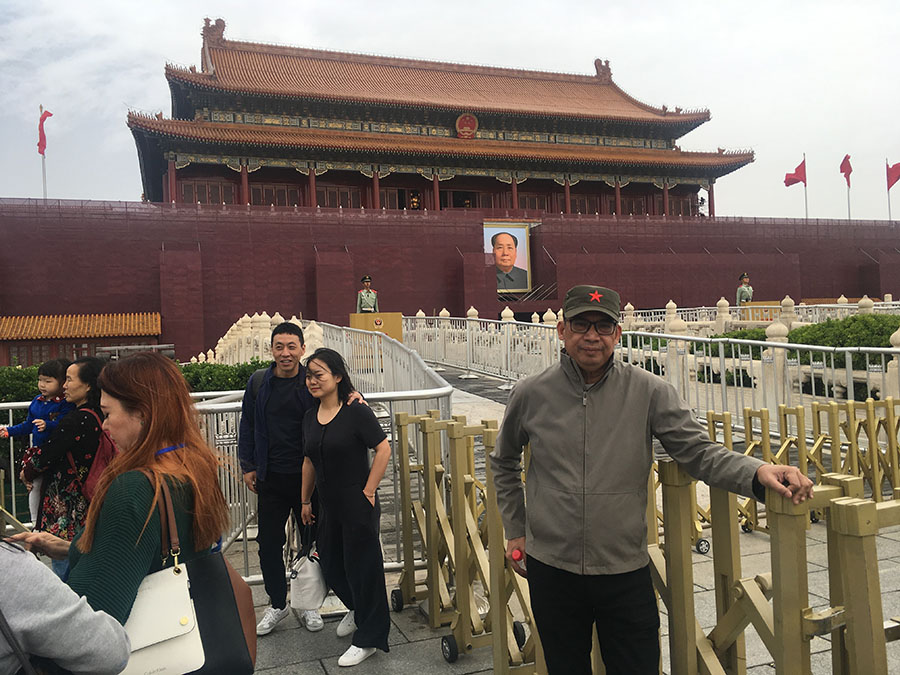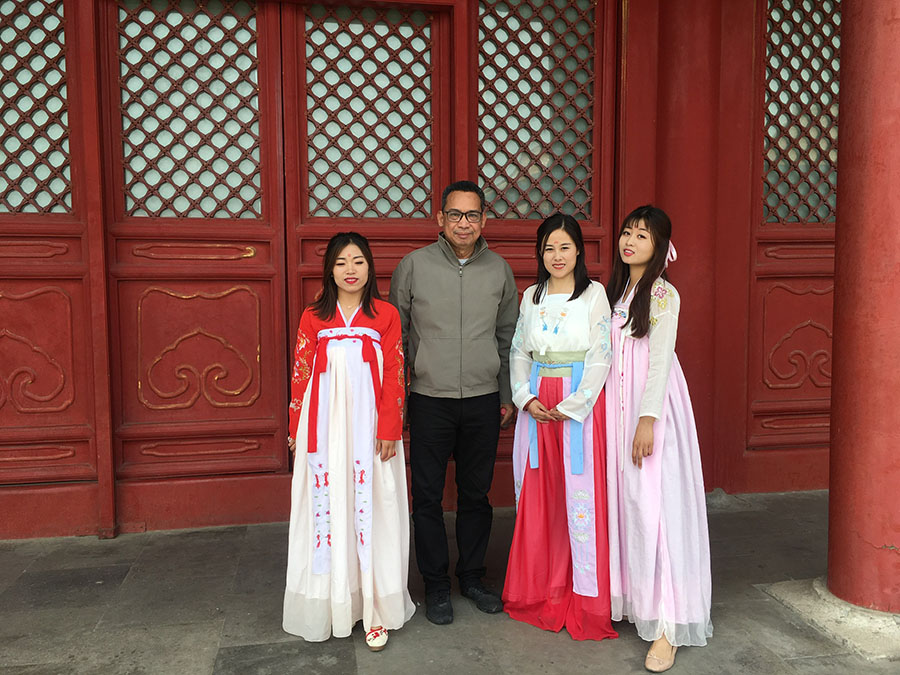TIANANMEN SQUARE – Near the historic Tiananmen Square, I waited patiently in a long queue of mostly Chinese tourists to get into the Forbidden City, once home to emperors of the bygone era.
Amazingly, thousands of local tourists from the provinces visit the site every day. The Chinese themselves outnumber foreign tourists at the Forbidden City whose management has to limit the number of daily visitors to 80,000. Yes, you read it right – 80,000 visitors daily.

After the guard scanned my machine-readable Philippine passport, I was allowed to enter the first gate where a huge portrait of Chairman Mao greets visitors. I am about to see the home of the emperors and the late Pu Yi comes into my mind – he was the last boy emperor to had lived in the Forbidden City.
After passing the 2nd gate, I had to pay RMB60 to get into the Forbidden City. The Forbidden City is a heritage site just like Fort Santiago is to Manila.
The magnificence of the past resonates in each halls and palaces surrounding the Forbidden City as if time froze everything inside to allow the people of the world to see and feel the cultural gift of the various dynasties that ruled old China. Any first time visitor would pass the following gates, halls and palaces: Meridian Gate (Wu men), Hall of Martial Valor (Wuying dian): Painting and Calligraphy Gallery, Gate of Supreme Harmony (Taihe men), Hall of Supreme Harmony (Taihe dian), Hall of Central Harmony (Zhonghe dian), Hall of Preserving Harmony (Baohe dian), Palace of Heavenly Purity (Qianqing gong), Hall of Union (Jiaotai dian), Palace of Earthly Tranquility (Kunning gong), Area of Six Eastern Palaces (Dong liugong qu), Hall for Abstinence (Zhai gong), Outer Court of Palace of the Tranquil Longevity Sector (Ningshougong qu): Treasure Gallery and Stone Drum Gallery, Inner Court of Palace of the Tranquil Longevity Sector (Ningshougong qu): Treasure Gallery, Opera Gallery, and the Well of Consort Zhen (Zhenfei jing), and lastly the Gate of Divine Prowess (Shenwu men).

The Forbidden City is located in the heart of Beijing and can be approached from the Gate of the Heavenly Peace (Tian’an men). The 1,110,000 square-meter Forbidden City has a 10-meter high walls from all corners and surrounded by a 52-meter moat. Two consecutive dynasties – the Ming (1368-1644) and the Qing (1644-1911) – lived in the Imperial Palace.
According to Mr Song Mingchang, who keynoted the 2019 Seminar of Filipino journalists at the National Radio and Television Administration headquarters, “China’s domestic tourists reached 5 billion in 2017.” The number of outbound tourists was recorded at 142 million.

Mingchang said China is offering tours to the Great Wall; Coastal Tour in Dalian, Liaoning province; Qingdao, Shandong province; Beihai, Guangxi province and Sanya in Hainan province; the Silk Road Tour in Urumchi, Xining, Lanzhou, Xian, etc; Folk Culture Tour in the provinces of Shanxi, Henan, Shandong and Beijing; Snow Scenery Tour in Liaoning, Heilongjiang and Jili; Minority Folk Culture Tour of China’s Southwestern Region in Yunan, Guizhou, Guangxi and Shichuan; Tour of the Water Towns of the Yangtze River Delta in Hangzhou and Jiaxing, both in the Zhejiang province; Yangzhou and Suzhou, both in Jiangsu province; Gorges Tour of the Yangtze River in Sichuan, Hunan and Hubei; Folk Culture Tour of the Yellow River in the provinces of Qinghai, Gansu, Ningxia, Shanxi, Inner Mongolia province, Henan and Shandong.
The China Cultural and Tourism Department is doing a great job in promoting countryside tourism because it attracted hordes of visitors into the country. Tourism is playing a vital role in generating livelihood opportunities for the locals supporting President Xi Jinping’s poverty alleviation program in the countryside.




